See
seeThis is a list of “See” search by purpose.
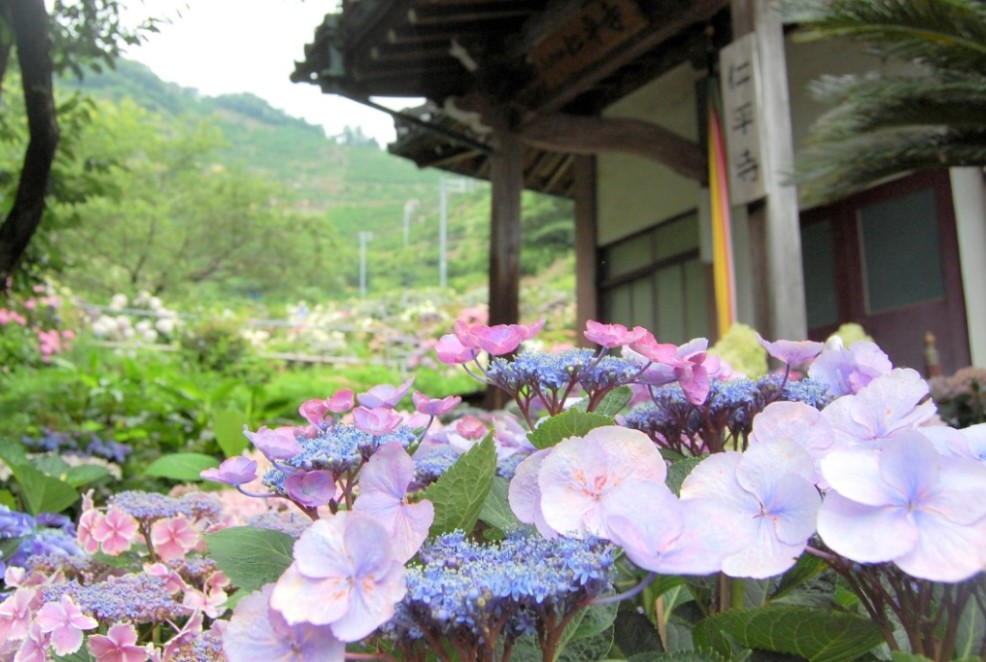
Ninpei-ji Temple
Located in the Masago Valley in the western part of Itoga-chou, the temple was originally called Masago-dera and once had a complex of seven halls, but declined and was revived during the Ninpei era (1151-3). Although it is an ancient temple, it is currently without a resident monk and houses ancient statues such as the main Yakushi Nyorai statue (from the late Heian period or Kamakura period), as well as statues of Amida and Kannon in a small hall. Additionally, it is home to the city-designated cultural asset, the Tobatsu Bishamonten statue (from the Kamakura period). The temple grounds are adorned with hydrangeas and white wisteria trees. The "Ninpei-ji temple", beloved as the Hydrangea Temple, welcomes the peak bloom of hydrangeas in early June, with approximately 1,000 hydrangea bushes in full bloom on the grounds. Local caretakers nurture potted hydrangeas and display pressed hydrangea flowers.
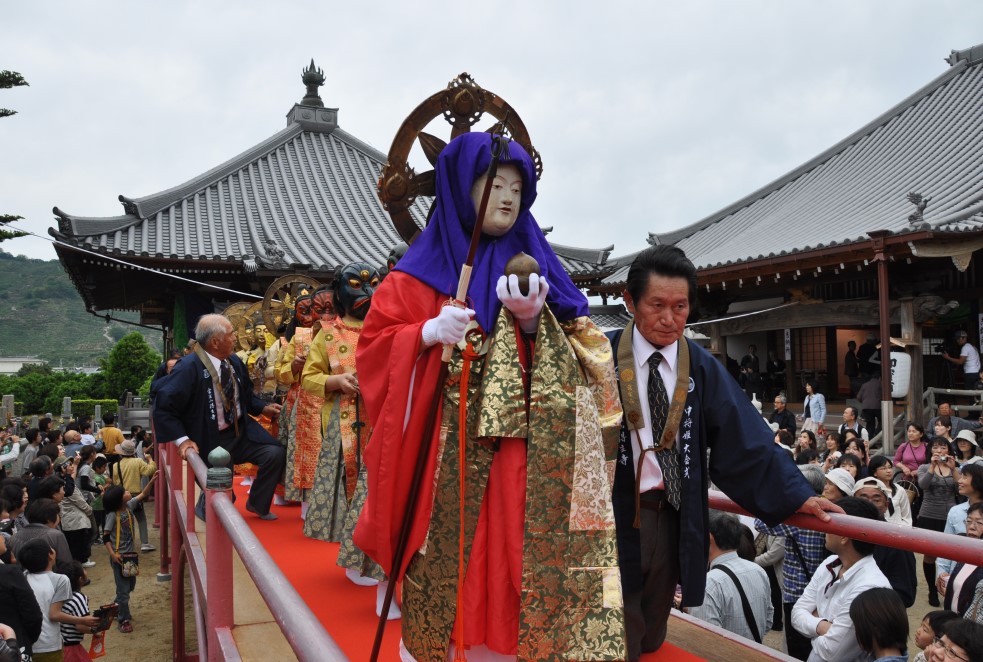
Tokushou-ji Temple
In the year 747 (Tenpyou 19), during the Nara period, the Minister of the Right, Fujiwara no Toyonari and his wife prayed at Hase-dera temple and gave birth to Princess Chuujou. When the princess was 3 years old, her mother, Murasaki no Mae, passed away, and when she was 7, her father, Toyonari, took Teruyo no Mae as his second wife. As the princess grew, she became exceptionally beautiful, intelligent, and excelled in everything she did. This led her stepmother to grow resentful, and at the age of 13, she secretly ordered a retainer named Ito Harutoki to assassinate the princess at Mount Hibari-yama in Kii Province. However, Harutoki was moved by the princess's virtue and instead called his wife from the capital to protect and raise the princess. Three years later, in the year 761 (Tenpyouhouji 5 ), Toyonari returned from a hunting trip and tearfully reunited with the princess. However, at the age of 17, she shaved her head and took the name Hounyo at Taima-dera temple, where she also wove the famous Taima Mandala. In the year 775 (Houki 6), on the 14th day of the second month, she was welcomed by 25 bodhisattvas and closed her tumultuous life at the age of 29. At Tokushou-ji Temple, every year on the princess's memorial day, which falls on May 14th, a special ceremony called the Raising Ceremony is held. During this event, elementary school students dress up as the 25 bodhisattvas and parade from the Founder's Hall to the Main Hall, a valuable tradition that offers insight into ancient Buddhist culture.
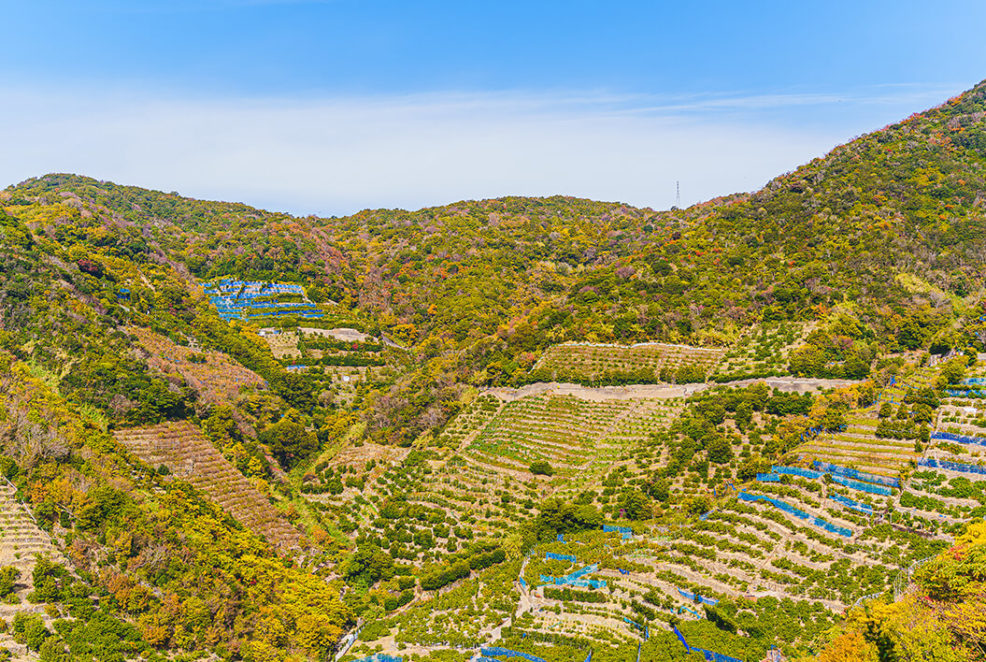
Yamadahara Mandarin orange farm
The mandarin orange cultivation in the Arida region is a traditional agriculture that has been passed down for over 400 years in a natural environment with many mountain forests and few harvests from flat fields. It is considered one of Japan's agricultural heritages. The terraced mandarin orange fields along the Arida River, especially those near the summit of Yamadahara, provide a picturesque view during the harvest season when the mountains turn orange and offer a splendid panoramic view of the Arida River estuary and Arida City.
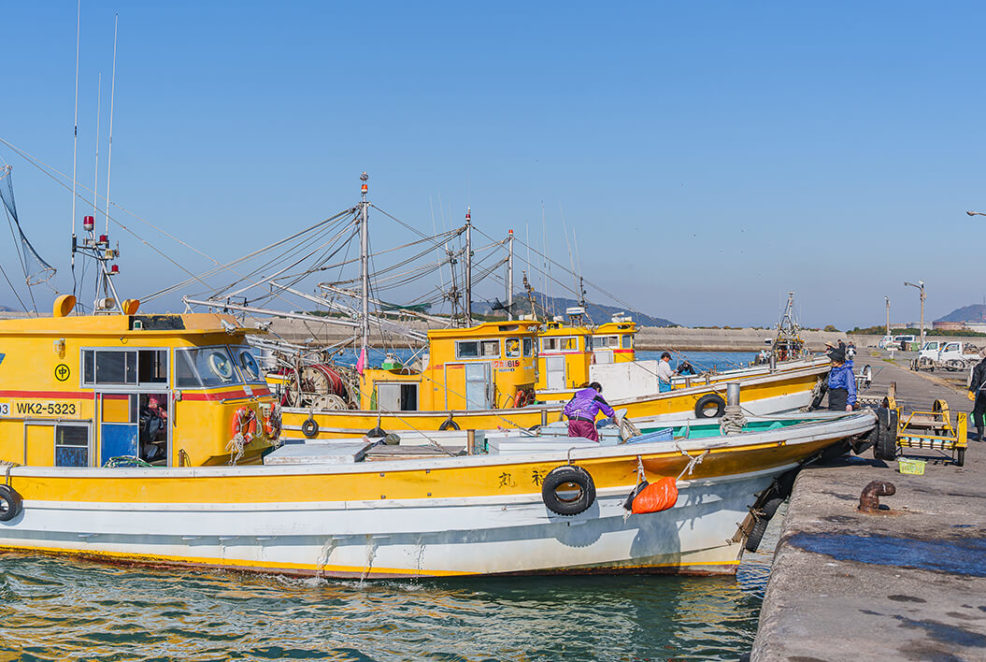
Minoshima fishing port
Arida City is an area with a high number of tourists visiting the fish market in Wakayama, serving as a home port for small-scale boat bottom trawling, Seto Inland Sea boat bottom trawling, and single-line fishing. The city boasts a yearly landing of over 300 fish species, with the Tachiuo fish being the top catch, not only in the prefecture but also in Japan. The "Minoshima" brand, in particular, is well-known. At Minoshima fishing port, a fleet of yellow "Utase-sen" boats returns around 3 p.m., with numerous carts waiting at the port to transport fresh fish for auction. The vast area is equipped with large facilities and ample parking, easily accessible within about an hour from Osaka and Kansai International Airport. The locally cherished "Hama no Utase" direct sales and dining facility, named with the heartfelt thoughts of local fishermen, is open within the Minoshima fishing port.
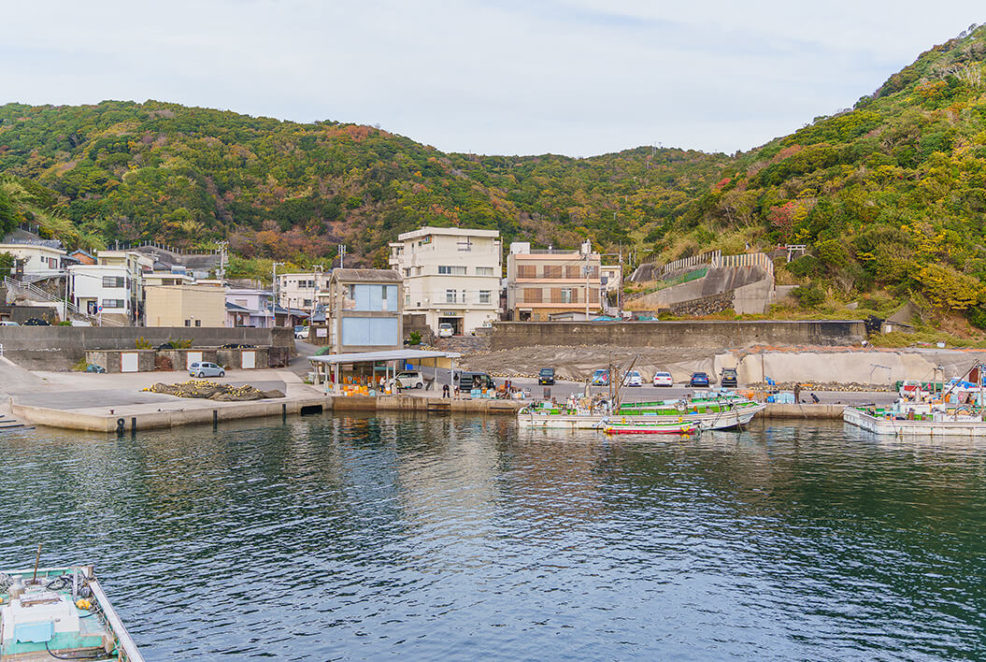
Ooi fishing port
The Ooi Area of Arida City faces the Kii Channel and is a thriving town having abundant fishery resources. Traditional octagonal net fishing using fixed nets is carried out from early morning, with men heading out for fishing. Arida City is known for having the highest catch of hairtail in Japan, including Minoshima Fishing Port, and hairtail, known as "taccho" or "Kishu Kinotachi," is a high-class fish. At Ooi Fishing Port, boats return before dawn, and the caught fish are auctioned off. This area serves as a base for large fixed net fishing and drift net fishing, with the octagonal fixed nets known for their feature of causing minimal damage to the fish, resulting in the capture of beautiful fish.
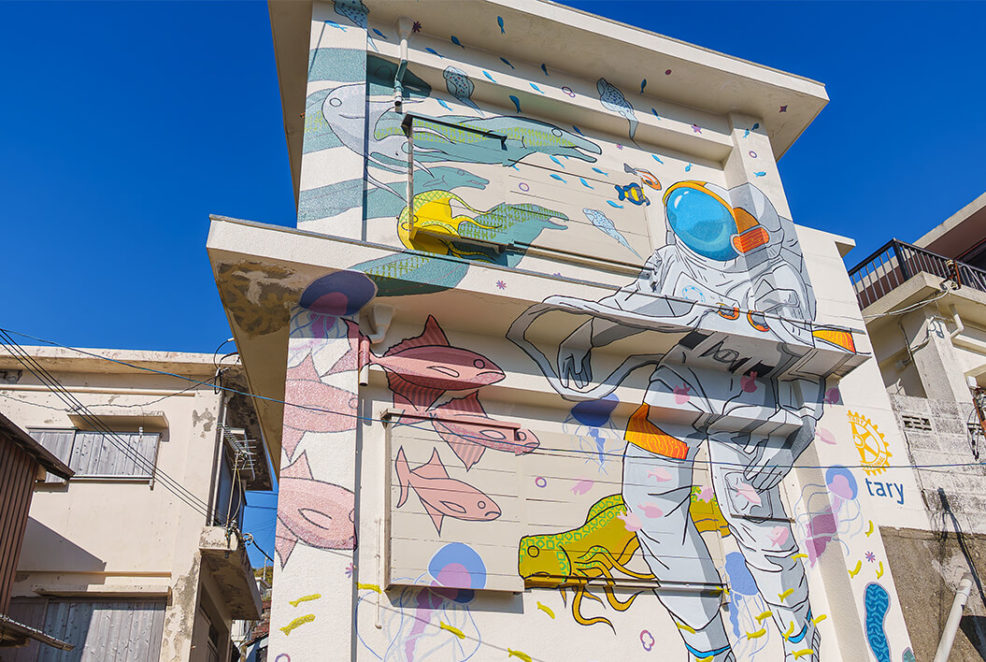
Yabitsu Area
The Yabitsu area is a small seaside port town known as the mysterious land of Arida, where the blue sky, white houses, and beautiful sea create a landscape reminiscent of Italy's Amalfi Coast. This area, surrounded by the sea and mountains, is like a hidden retreat, offering stunning cafes and enjoyable city walks. With a history dating back to the early Edo period, the Yabitsu area has preserved the traditions of the Kishu Tokugawa family for over 400 years, making it worth visiting sites such as "Yabitsu Ebisu Shrine" and "Nanryu Shrine", which enshrines the first feudal lord. In recent years, the opening of the "Kurashicharu Yabitsu" relocation experience facility has brought new vitality, making it a hub for activities such as stand-up paddleboarding (SUP) and showcasing wall art at the port.
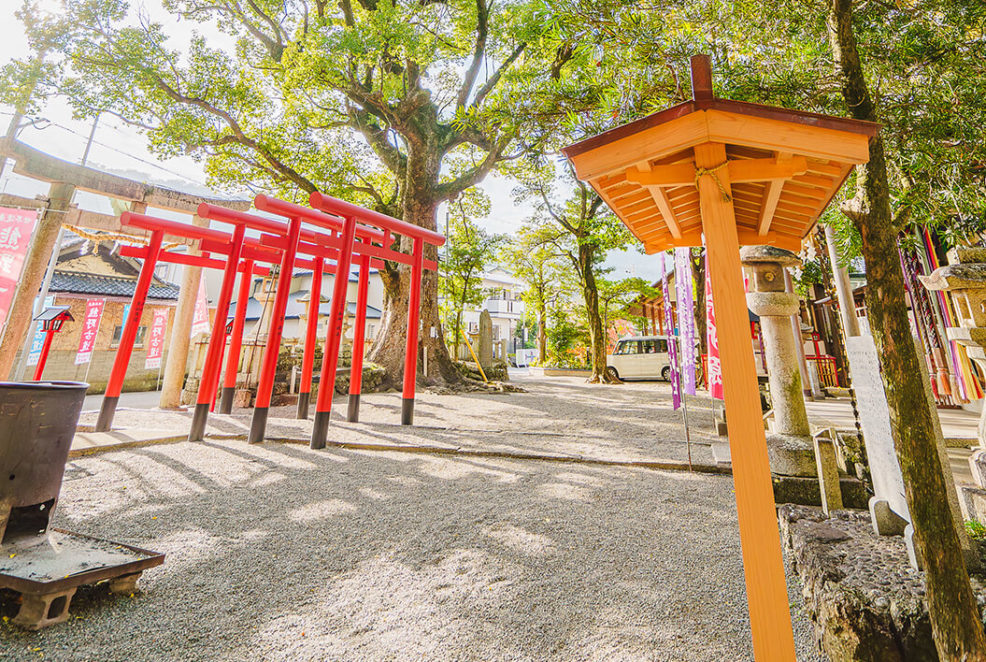
Itoga Inari-jinja Shrine
"Honcho-saisho Inari Shrine" is the oldest Inari shrine in Japan, with its name displayed on the front torii gate. Inside the shrine grounds, there are estimated to be 500 to 600-year-old camphor trees. There used to be four trees, but now only three remain, with one in the northwest having withered. These three camphor trees are a rare presence and have been designated as natural monuments of Arida City. Walking the "Kumano Kodo" from the shrine and climbing the "Itoga Touge" will lead you to the "Inabane Shrine," where it is said that the Inari god descended. From February to March, you can enjoy the scenery of lined torii gates and Kawazu cherry blossoms.
Arida BLUE Campsite
A campsite with a great location. Located on top of a mountain overlooking the sea, there are no residential houses nearby, allowing you to enjoy a luxurious private space with the nature of Arida all to yourself. The area around the campsite is very quiet, and you can feel the nature with the sounds of birds and, in summer, cicadas chirping. There are no street lights around and the stars shine brightly at night, making it very beautiful. You can enjoy the nature of Arida.